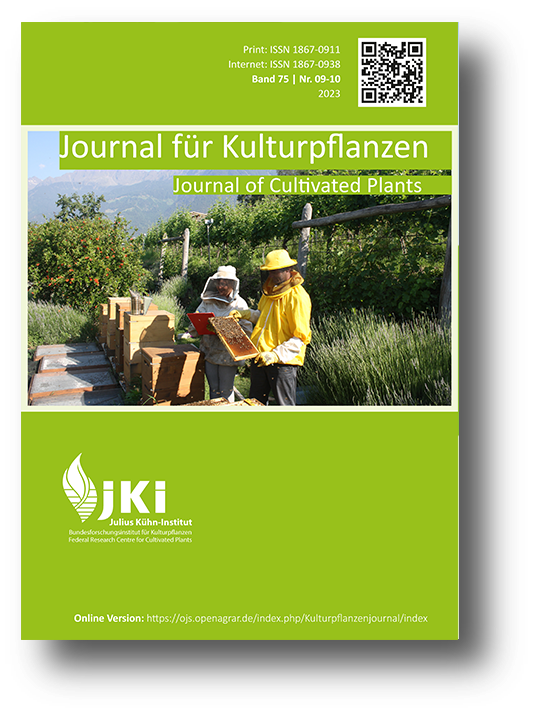Studies on the botanical origin and the residues of pesticides in corbicular pollen loads and bee bread of bee colonies in the proximity of apple orchards in South Tyrol
DOI:
https://doi.org/10.5073/JfK.2023.09-10.01Keywords:
honeybees, corbicular pollen loads, bee bread, pesticides harmful to beesAbstract
Pollen is the primary source of protein for honeybee colonies. Foragers collect pollen from different plants depending on the availability of the surrounding environment, which varies seasonally in wild and urban areas or agricultural landscapes. In agricultural systems, honeybees can play a particular role as pollinators, especially where entomophagous pollination is important, such as in pome fruits. In intensively managed agricultural systems, honeybees and other pollinators are often exposed to pesticides. The exposure to pesticides via corbicular pollen load or bee bread has been analysed in several studies; previously, some studies also included the analysis of the botanical origin of the chemically analysed corbicular pollen load samples. In this study, we tried to focus on the accumulation of pesticide quantities in bee bread portions in the hives from March to October and simultaneously the dynamics behind the incoming pesticide residues on the daily collected corbicular pollen load samples from March to June. In addition, palynological analyses were performed on some corbicular pollen loads.
From 2016 to 2020, we collected corbicular pollen loads from two honeybee colonies from March to June in three different apiaries in South Tyrol. Every three weeks, starting with calendar week 11 in March, we took bee bread samples from other colonies in the same apiary, next to those which were used for corbicular pollen load collection. We performed chemical residue analyses on 154 corbicular pollen load and 217 bee bread samples. In 84.3% of the corbicular pollen load samples and in 76.4% of bee bread samples, we found contamination with pesticide active substances (PAS) used in plant protection products harmful to bees (according to the Italian etiquette). On 152 samples of the corbicular pollen loads, we also performed palynological analyses to determine the botanical origin of the pollen samples. In the case of some samples, even if most of them belonged to species not grown in agricultural fields, the quantity of active substances harmful to bees detected on them was higher than 1 mg/kg, as in the case of chlorpyrifos-methyl. On the example of chlorpyrifos-methyl and chlorpyrifos-ethyl (the latter was used only until 2016 and was then mostly replaced by chlorpyrifos-methyl for the period 2017-2020), it was possible to show in which amounts these active substances were present in corbicular pollen loads and bee bread samples of colonies placed near apple orchards in South Tyrol over a period of five years.
Downloads
Published
Issue
Section
License
Copyright (c) 2023 The Authors

This work is licensed under a Creative Commons Attribution 4.0 International License.
The content of the journal is licensed under the Creative Commons Attribution 4.0 License. Any user is free to share and adapt (remix, transform, build upon) the content as long as the original publication is attributed (authors, title, year, journal, issue, pages).
The copyright of the published work remains with the authors. The authors grant the Journal of Cultivated Plants, the Julius Kühn-Institut and the OpenAgrar repository the non-exclusive right to distribute and exploit the work.







